Modest Mussorgsky’s walk about a picture show, Pictures at an Exhibition, started life as a piano suite in 10 parts with a recurring Promenade part as the viewer moved from picture to picture. Written in 1874, it is based on an exhibition of the works of Viktor Hartmann, painter and architect, done at the Imperial Academy of Arts in St Petersburg following the artist’s death from an aneurysm at age 39 in 1873. Mussorgsky, a friend of Hartmann’s, tours the listener around the exhibition. Most of Hartmann’s works from this exhibition are now lost.
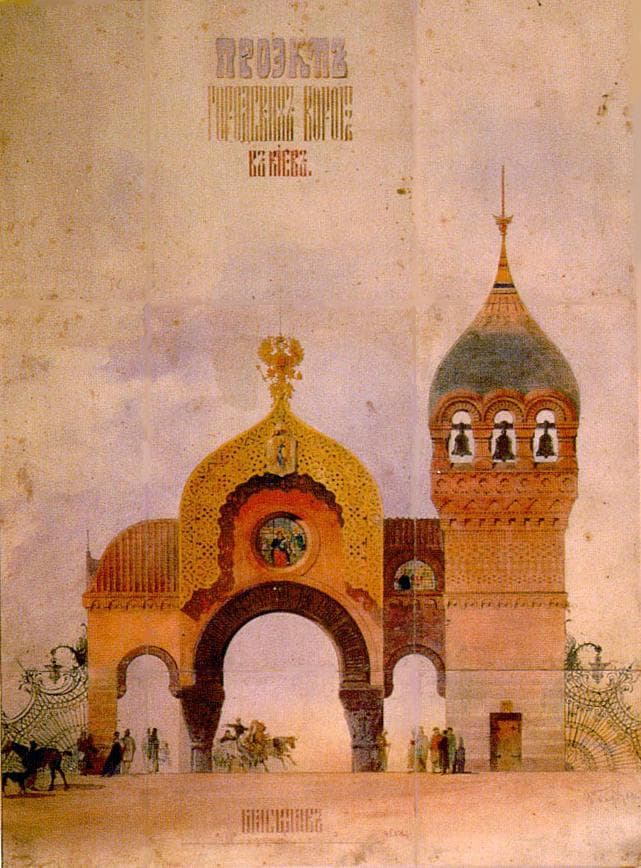
Hartmann: Plan for a City Gate in Kiev
The score for Mussorgsky’s work was not published until 5 years after his death, in 1886, but was full of errors. A corrected edition came out only in 1931.
Five years after the first publication of Mussorgsky’s work, the first orchestral version, an incomplete setting by Mikhail Tushmalov was performed in 1891. English conductor Henry Wood did his orchestration in 1915 but when Maurice Ravel’s version came out in 1922, Wood withdrew his arrangement. Despite being the favourite of the orchestral versions, even Ravel’s orchestration wasn’t true to Mussorgsky’s original, omitting a middle Promenade and adding his own ideas about dynamics and notation. Orchestrators who have followed Ravel have made their own changes, such as dropping sections, but Ravel’s orchestration has remained popular.
It has been arranged for chamber orchestra, concert band, brass band, solo classical guitar, piano trio, saxophone choir, glass harp, jazz orchestra, Chinese orchestra, organ, rock band, electronics, and many other ensembles. It generally breaks down into classical / jazz/pop style differences.
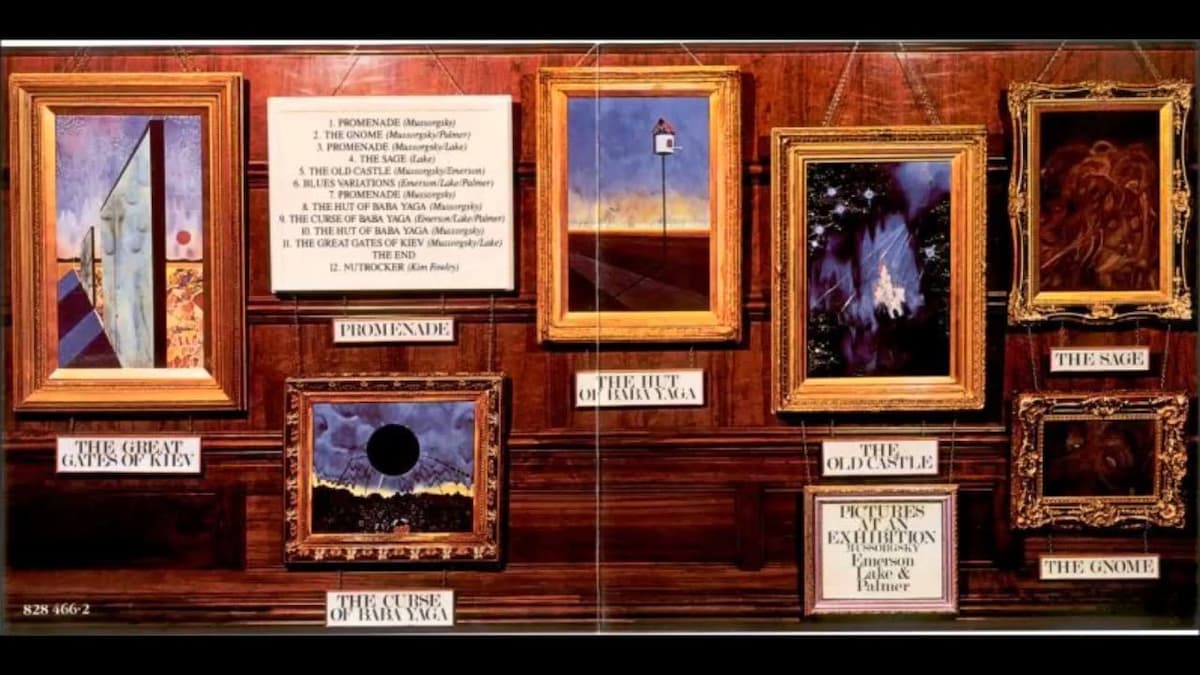
Emerson Lake and Palmer: Pictures at an Exhibition album cover
A new recording that seems to mix them all together comes from pianist Ragna Schirmer and percussionist Matthias Daneck in Piacussion Pictures, released 1 April 2023.
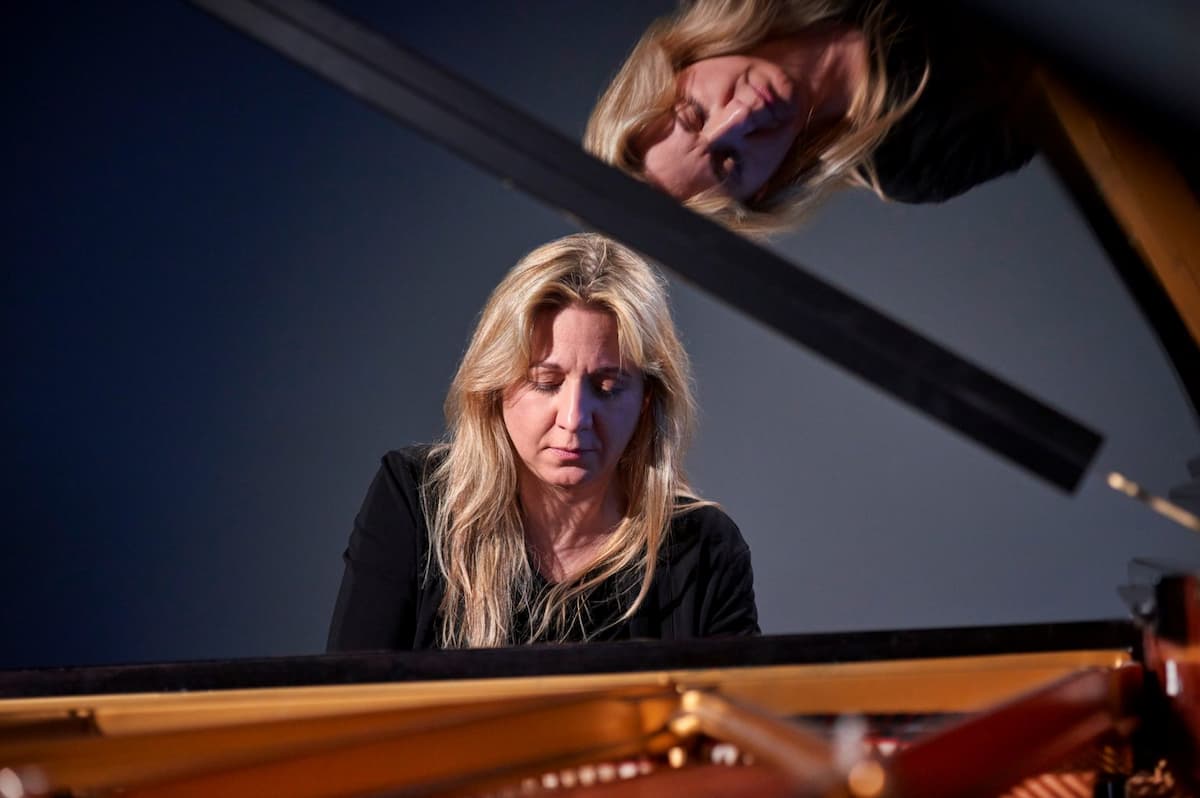
Ragna Schirmer
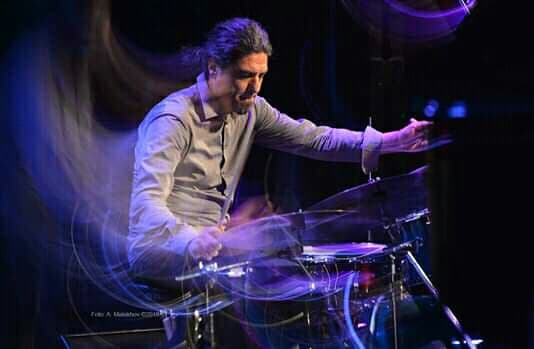
Matthias Daneck
It opens with a set of drum rolls and random piano sounds before the piano brings in the first Promenade melody. The drum beat is matched by the piano to give us a more march-like Promenade than we’ve ever heard before.
Modest Mussorgsky: Pictures at an Exhibition (arr. for piano and percussion) – Promenade – I. The Gnomus (Ragna Schirmer, piano; Matthias Daneck, percussion)
Other movements have less percussion participation, but when the percussion does come in it adds an interesting dimension to the piece. In III. Tuileries, which depicts “an avenue in the garden of the Tuileries, with a swarm of children and nurses”, according to Stasov, the percussion gives us more movement.
Modest Mussorgsky: Pictures at an Exhibition (arr. for piano and percussion) – Promenade – III. Tuileries (Ragna Schirmer, piano; Matthias Daneck, percussion)
In VII. The Market Place at Limoges, the tempo seems slower than we expect from the usual orchestral version, but then we hear some of the rhythmic changes the pianist is interpolating and it all becomes a bit more frenetic. Again, the percussion underlines, but doesn’t lead the changes. When we have the great change down into the catacombs, the percussion leaves us for the solemnity of the moment.
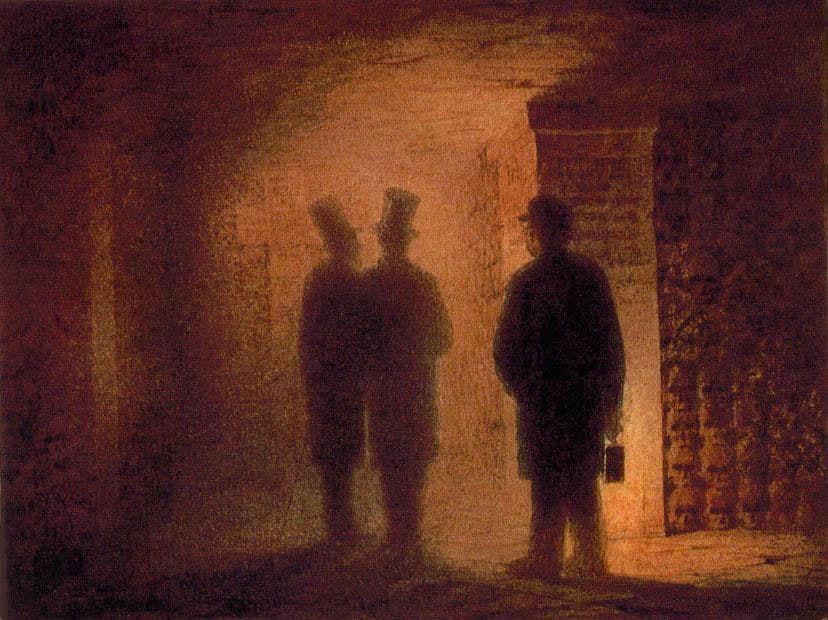
Hartmann: The Paris Catacombs
Modest Mussorgsky: Pictures at an Exhibition (arr. for piano and percussion) – VII. The Market Place at Limoges – VIII. Catacombae: Sepulchrum romanum – Cum mortuis in lingua mortua (Ragna Schirmer, piano; Matthias Daneck, percussion)
The final movement, X. The Great Gate of Kiev, brings the percussion and piano into juxtaposition again – now with a more jazz drum-set beat. The percussion undercuts the power of the piano depiction, until the hushed second section, based on a Russian Orthodox baptismal hymn, comes in. The middle section with the promenade theme and the suggestion of clockwork and bells is nicely accented by the percussion additions. The final great statement of the theme underscored with percussion, brings out the grandeur.
Modest Mussorgsky: Pictures at an Exhibition (arr. for piano and percussion) – X. The Great Gate at Kiev (Ragna Schirmer, piano; Matthias Daneck, percussion)
The Piacussion Pictures are an interesting addition to the long line of versions of Mussorgsky’s piano suite. Some may find it a bit flippant in its application of the varieties of percussion, but it does make you think about the process and progression through the picture gallery – this time, you can skip and jump a bit more.
For more of the best in classical music, sign up to our E-Newsletter



